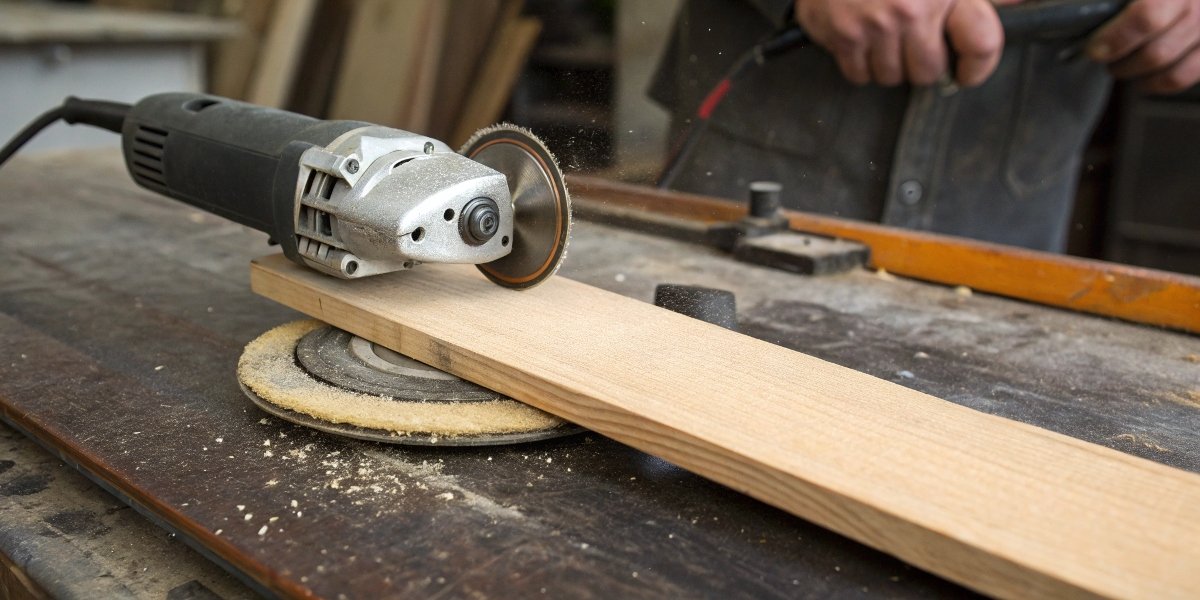
Tempted to use your angle grinder for a quick wood cut? It seems like a fast solution, but this common impulse leads to one of the most dangerous situations in any workshop.
No, you should never mount a toothed saw blade on a standard angle grinder. The tool’s extremely high speed combined with an aggressive wood-cutting blade creates a massive risk of violent kickback. This can cause the tool to jump uncontrollably, leading to severe injuries.
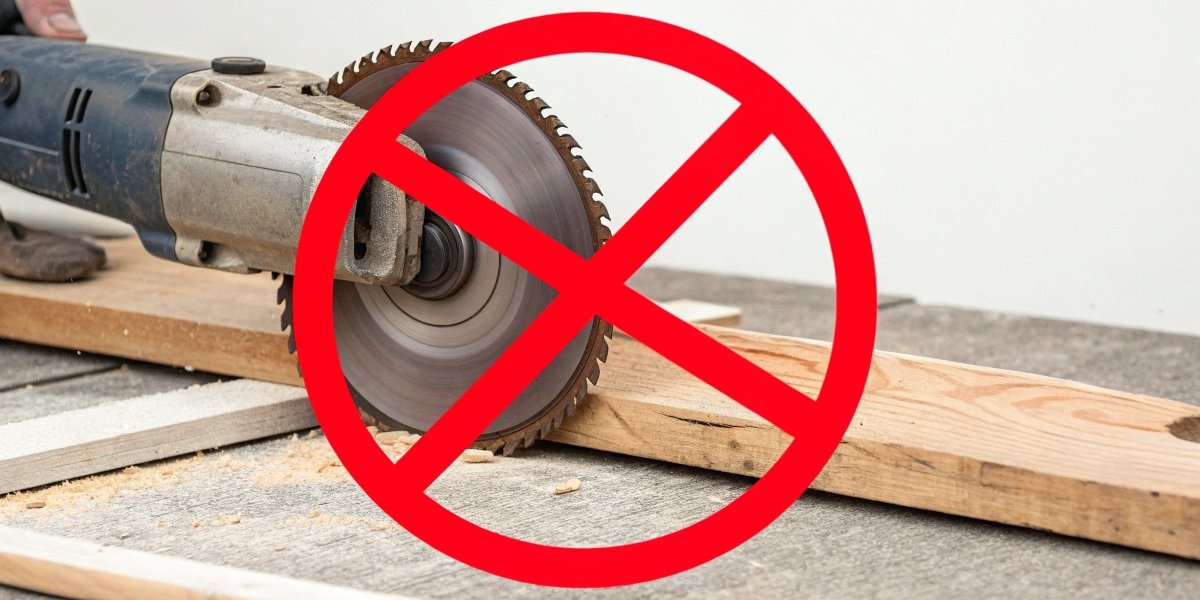
As the owner of a factory that has been making grinding tools for nearly 30 years, my answer to this question is always a very direct and serious "no." Our business, Reliable, is built on producing safe and effective tools. The laws of physics are not flexible. An angle grinder1 is designed for abrasion, not for the aggressive chipping action needed to cut wood. When clients or partners ask about this, I see it as my responsibility to explain precisely why this is a terrible idea and to guide them toward the correct, safe tools for the job.
What four things should you avoid when using an angle grinder?
Accidents often happen from simple, repeated mistakes. Believing you are too experienced to make one is the most dangerous mindset of all, leading to injury and project delays.
To ensure safety, you must avoid four things: never use a tool without its safety guard, never use a damaged or incorrect disc, never force the tool by applying excessive pressure, and never fail to properly clamp and secure your workpiece before starting.
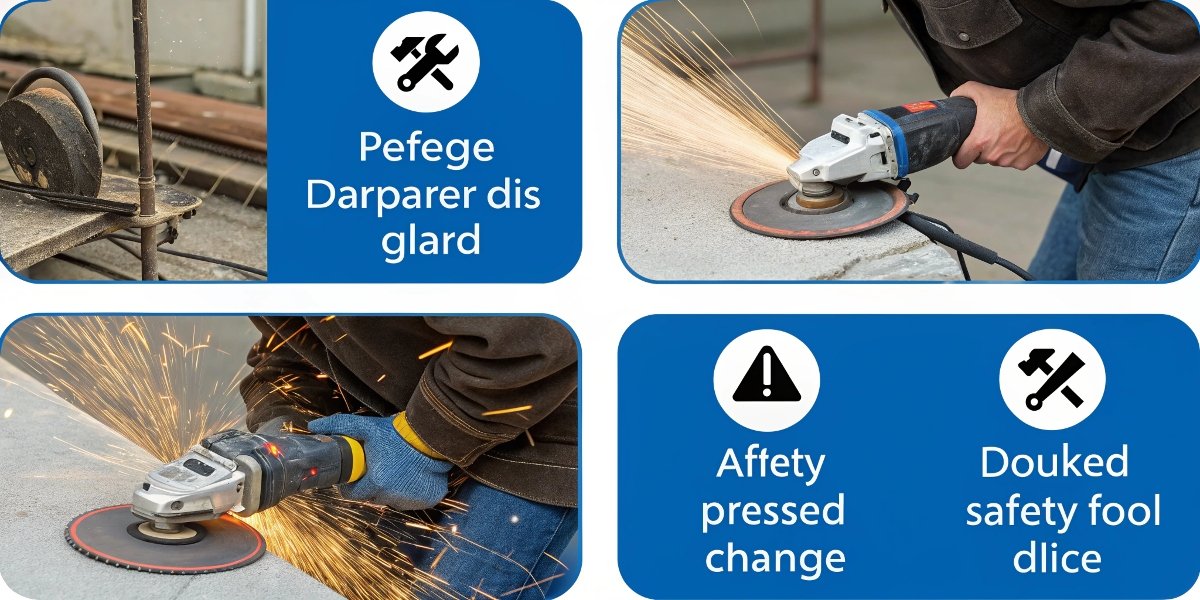
These four rules are the absolute foundation of safe operation. We stress them with every batch of our RL brand discs and with every OEM partner we supply. I once visited a large fabrication workshop where it was common practice for workers to remove the guards for better visibility. The potential for a catastrophic accident was enormous. We worked with their purchasing and safety managers to implement stricter protocols and retrain the staff. These four rules aren’t just suggestions; they are rigid requirements to protect your team and your business. Enforcing them is the single most effective way to prevent the vast majority of grinder-related accidents.
Your Non-Negotiable Safety Checklist
| Rule to Follow | Why It Is Critical |
|---|---|
| Keep the Guard On | The guard is your main defense. It’s designed to contain fragments if a disc shatters and to deflect sparks away from your body. Removing it is asking for a disaster. |
| Inspect Your Disc | A damaged, cracked, or warped disc can fly apart at 10,000 RPM. Always use a disc with an RPM rating that is higher than your grinder’s maximum speed. |
| Let the Tool Work | Pushing down hard does not speed up the cut. It overheats the motor and disc, drastically increases the risk of the blade jamming, and is a primary cause of kickback. |
| Secure Your Work | Never hold the item you’re cutting with your hands, feet, or by standing on it. It must be firmly clamped to a bench so it cannot move and pinch the blade. |
Can we use an angle grinder for wood cutting?
You see videos online of people cutting wood with angle grinders. This makes it look like a viable, if risky, technique and creates confusion about what is actually safe.
No. The fundamental design of an angle grinder makes it entirely unsuitable for cutting wood with a saw blade. Its high rotational speed is meant to abrade material, like metal or stone. It is not designed to handle the chipping action and variable density of wood.
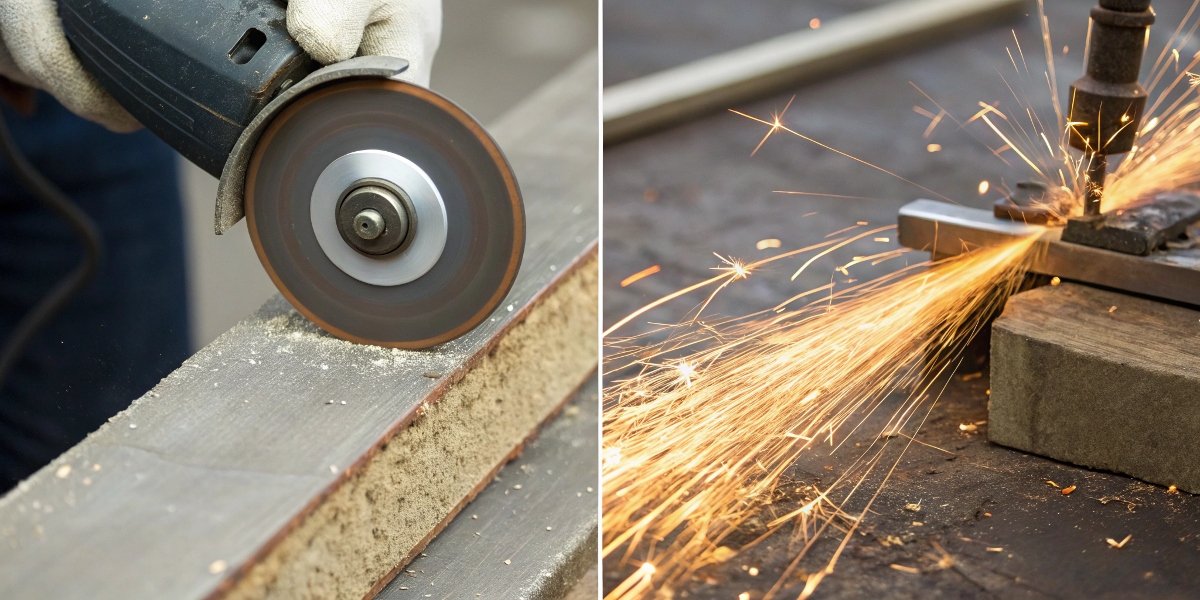
The core of my business is understanding how different materials interact with abrasives. The mismatch between an angle grinder and wood is a perfect example of this. A grinder’s purpose is to remove material in tiny particles through friction and abrasion. A wood saw blade’s purpose is to remove larger chips with sharp, angled teeth. When a toothed blade spinning at over 10,000 RPM hits a knot or the grain of a piece of wood, the teeth dig in and grab, instead of cutting smoothly. All of the motor’s massive torque is instantly transferred into a violent rotational kickback. A circular saw, by contrast, spins slower and has critical safety features2 like a riving knife to prevent this exact scenario.
Angle Grinder vs. Circular Saw for Wood
| Feature | Angle Grinder | Circular Saw (for Wood) |
|---|---|---|
| Tool RPM | Very High (10,000+ RPM) | Lower (3,000 – 5,000 RPM) |
| Cutting Action | Abrasive grinding | Chipping with teeth |
| Safety Features | Spark guard | Riving knife, anti-kickback pawls, blade guard |
| Control | Two-handed grip, no baseplate | Stable baseplate for smooth gliding |
| Risk with Wood | Extremely high risk of violent kickback3 | Kickback is possible but mitigated by design |
Can you get wood cutting discs for an angle grinder?
You’ve searched online marketplaces and found them: toothed blades sold for angle grinders. The very existence of these products creates a dangerous sense of false legitimacy.
Yes, you can find them for sale, but these toothed, chainsaw-like discs are incredibly dangerous and should be avoided entirely. Safer options, which are not for sawing but for shaping, use tungsten carbide grit instead of teeth. These are for carving, not cutting boards.
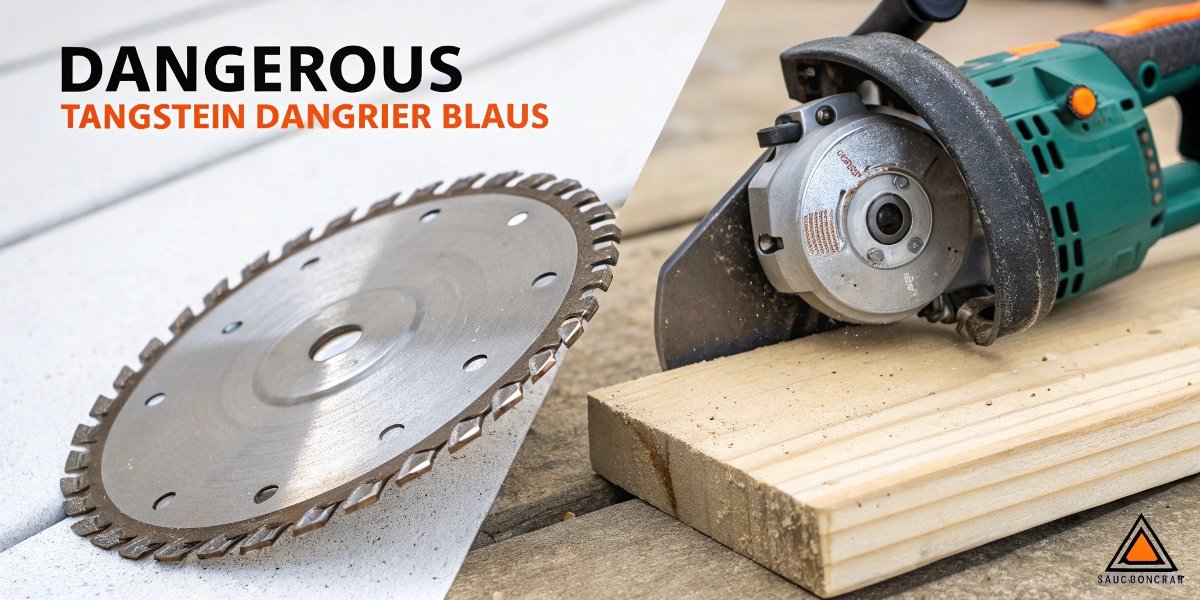
This is one of the most frustrating issues we face as a responsible manufacturer. Companies with no regard for safety produce and sell these toothed "death wheels" to untrained users. We refuse to make or sell them. They are an accident waiting to happen. However, there is another category of "wood disc" that is designed for a completely different purpose. These are carving and shaping discs. Instead of teeth that can grab, they are coated with coarse tungsten carbide grit4, so they function more like a very aggressive rasp or sander. They abrade the wood away rather than cutting it, which makes them far more controllable and much safer for their intended use: sculpting.
The Right Disc for Shaping, Not Sawing
| Disc Type | Intended Use | Risk Level |
|---|---|---|
| Toothed "Saw" Disc | Marketed for cutting wood. | EXTREMELY HIGH. Teeth grab and cause violent kickback. Avoid at all costs. |
| Tungsten Carbide Grit Disc | Shaping, sculpting, power carving wood. | Moderate. Requires skill and PPE, but does not have teeth that can grab and cause kickback. |
| Flap Disc | Sanding, smoothing, finish blending wood. | Low. Standard practice for finishing wood surfaces. |
What are wood carving discs for grinders used for?
You’ve seen the safer carbide grit discs but aren’t sure of their purpose. Using them for the wrong task, like sawing, would be ineffective and could still be dangerous.
Wood carving discs are specialized tools for woodworkers and sculptors. They are used for rapid, aggressive material removal, shaping curves, creating textures, and sculpting projects out of logs or large wood blocks. They are not for making straight, clean through-cuts.
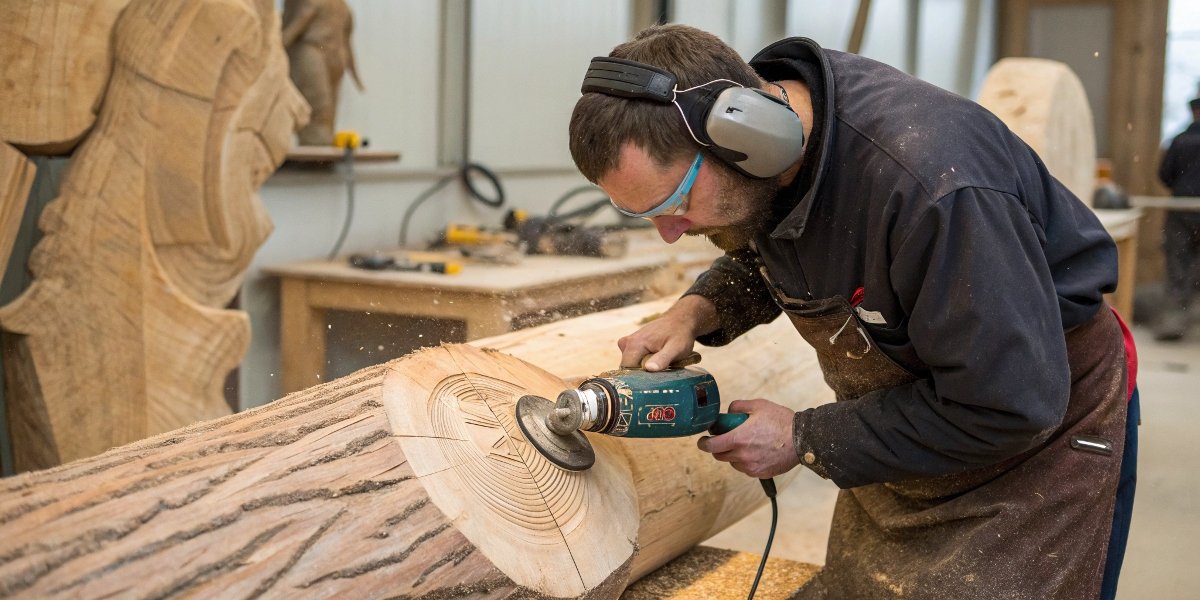
While my factory, Reliable, focuses on industrial abrasives5 for metal and masonry, we deeply respect the principle of using the right tool for the right material. These carving discs6 are a perfect example. They allow an artist to remove wood much faster than with traditional chisels or rasps. You would use one to hollow out a bowl, shape the contours of a chair seat, or create a large free-form sculpture. They are a tool for artistic expression and rapid shaping. However, they should never be confused with a saw blade. Trying to cut a 2×4 in half with one would be incredibly slow, messy, and would likely burn the wood. Always use these specialized tools for their intended purpose.
Appropriate Uses for Carving Discs:
- Sculpting logs
- Hollowing out bowls (e.g., dough bowls)
- Shaping custom furniture parts
- Removing large amounts of wood quickly
Inappropriate Uses:
- Cutting planks or boards to length
- Making straight, clean cuts
- Demolition work where a saw would be faster
- Any task requiring a smooth, finished surface (this is a roughing tool)
Conclusion
Never put a toothed saw blade on an angle grinder. The risk is too high. Always use the right tool for the job to ensure safety, efficiency, and professional results.
-
Understanding the purpose of an angle grinder can help you use it safely and effectively. ↩
-
Explore essential safety features that can protect you while using power tools. ↩
-
Discover the mechanics behind kickback to prevent accidents while using power tools. ↩
-
Discover the benefits of using tungsten carbide grit for safer and more effective wood shaping. ↩
-
Learn about industrial abrasives to understand their role in various manufacturing processes. ↩
-
Learn how carving discs can enhance your woodworking projects while ensuring safety. ↩
Written by
leeon
You may also be interested in:
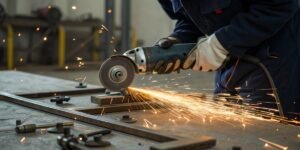
How do you cut bolts with an angle grinder?
Struggling to make a clean cut on a stubborn bolt? Using an angle grinder can feel intimidating, but it is a fast and effective method
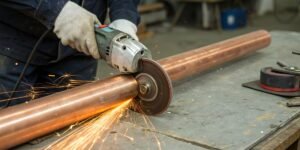
Can I use an angle grinder to cut a copper pipe?
Struggling with a quick copper pipe cut? Worried about damaging the material? An angle grinder is a fast solution, but using it wrong can be
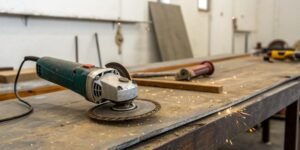
Can an angle grinder cut meat and bones?
Struggling to cut tough bones? Thinking of grabbing your angle grinder for a quick solution? This powerful tool seems like an easy answer, but it’s
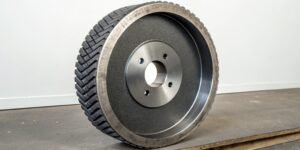
What's the application of CBN Wheels?
Struggling with grinding hard steels? Frequent wheel changes and poor finishes can hurt your bottom line. We have found that CBN wheels provide the durability
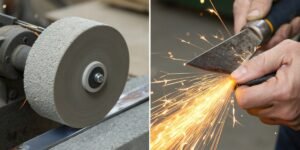
What is the difference between grinding and honing a blade?
A dull blade is a frustrating problem. It slows down production and ruins your workpiece. Using the wrong technique to fix it can cause permanent
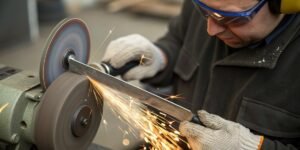
How to sharpen a knife on a bench grinder?
Is your dull knife slowing you down? A bench grinder seems like a quick fix, but you’re worried about ruining the blade. You need a
